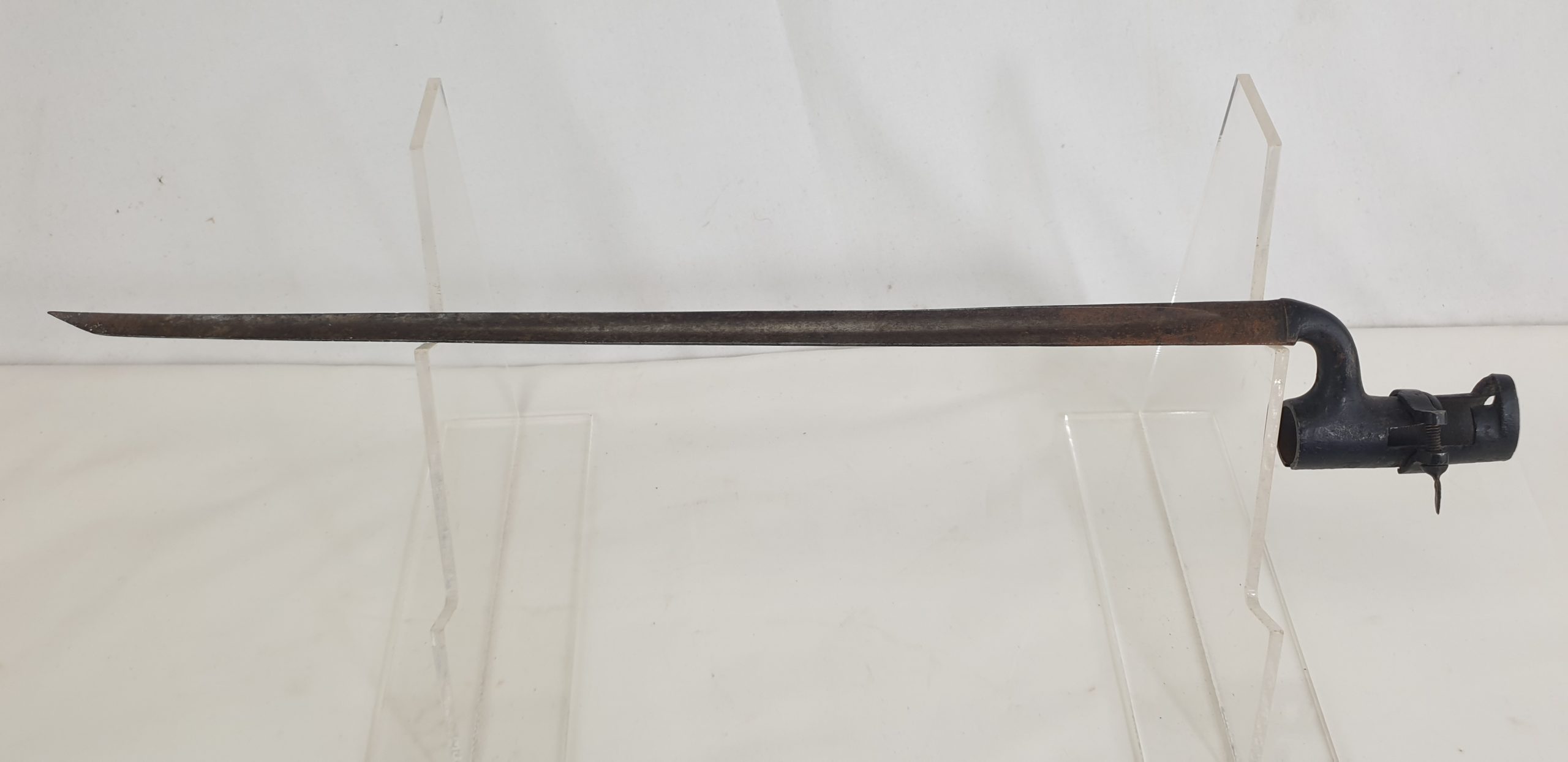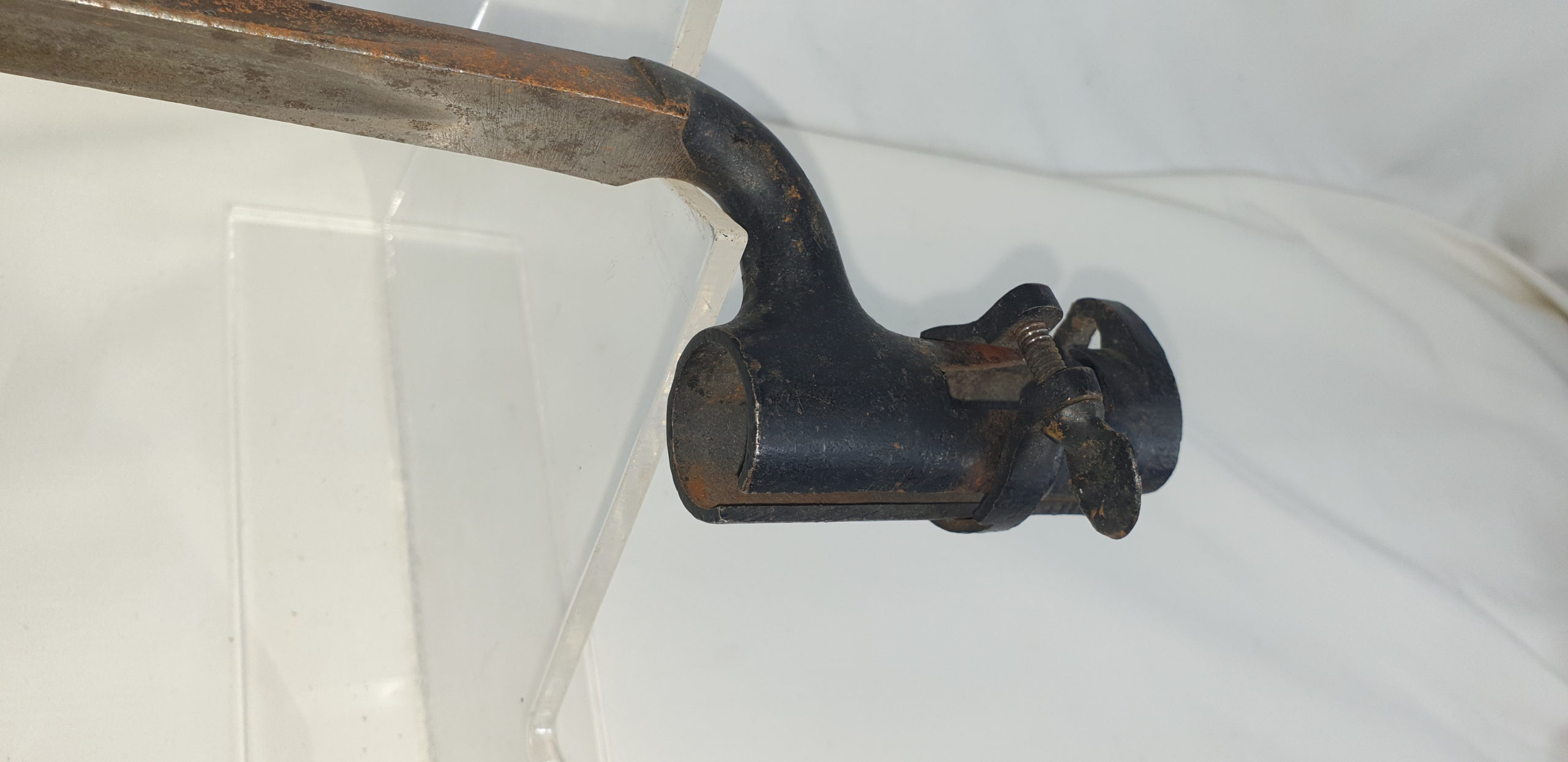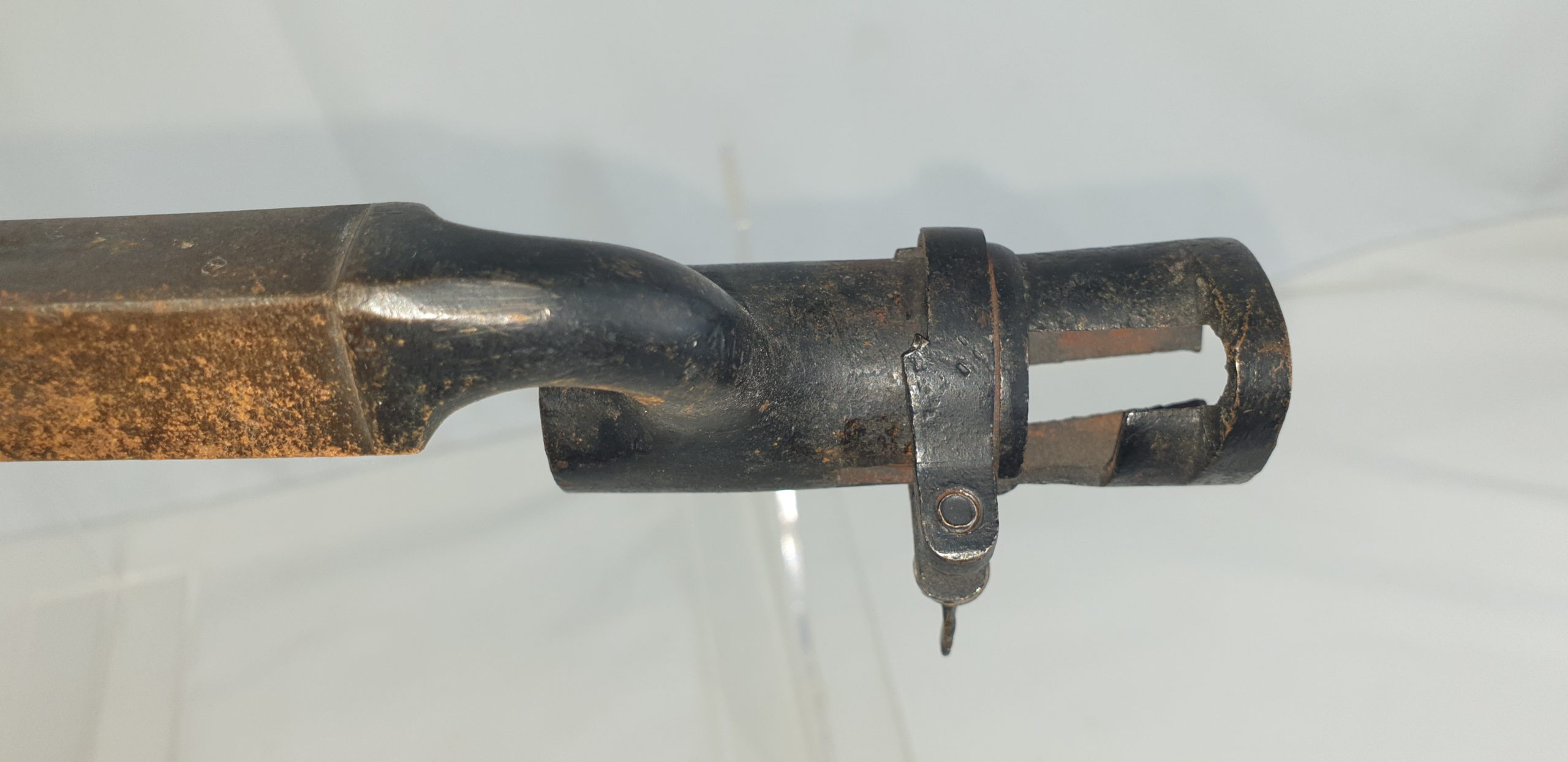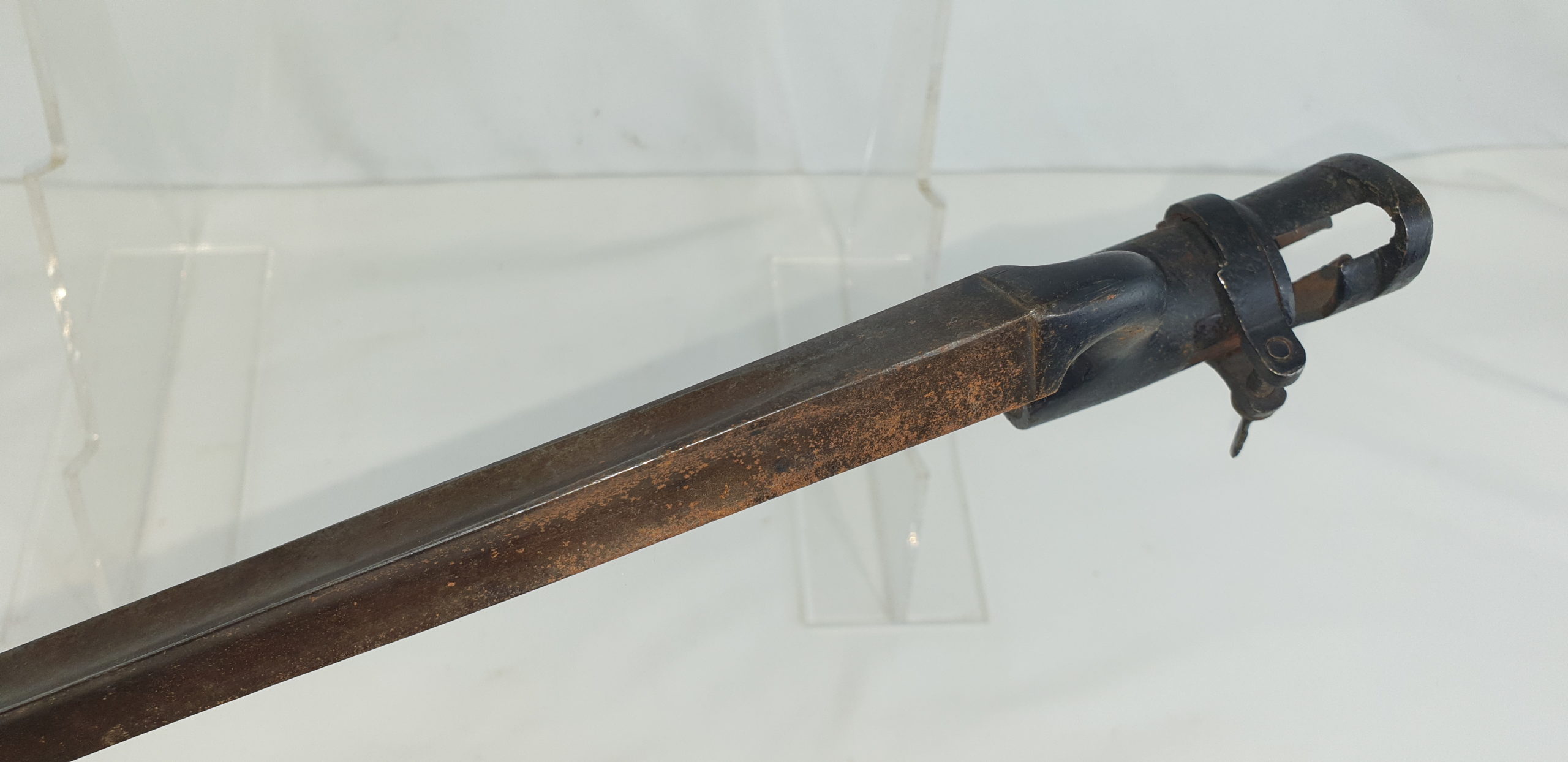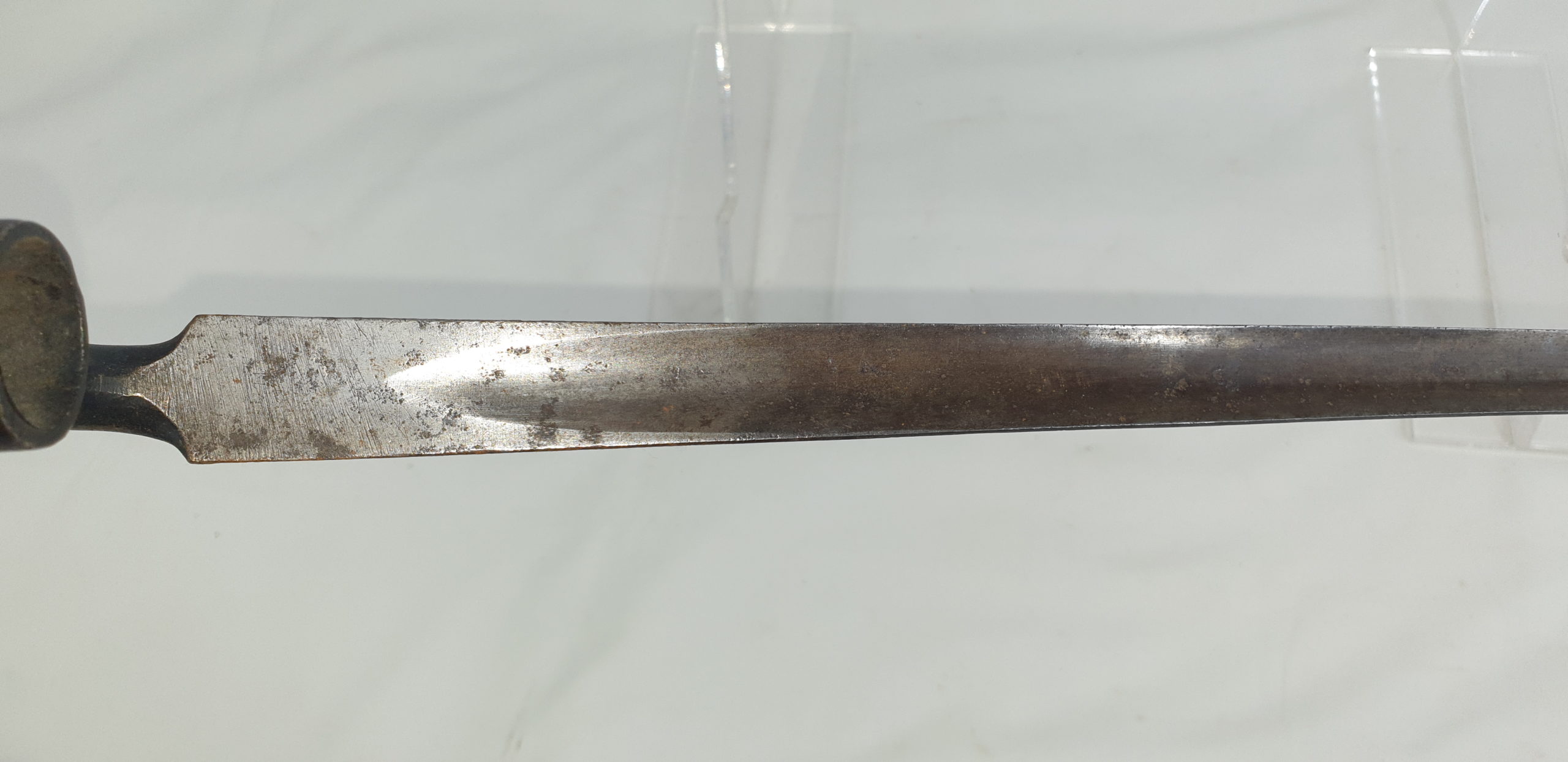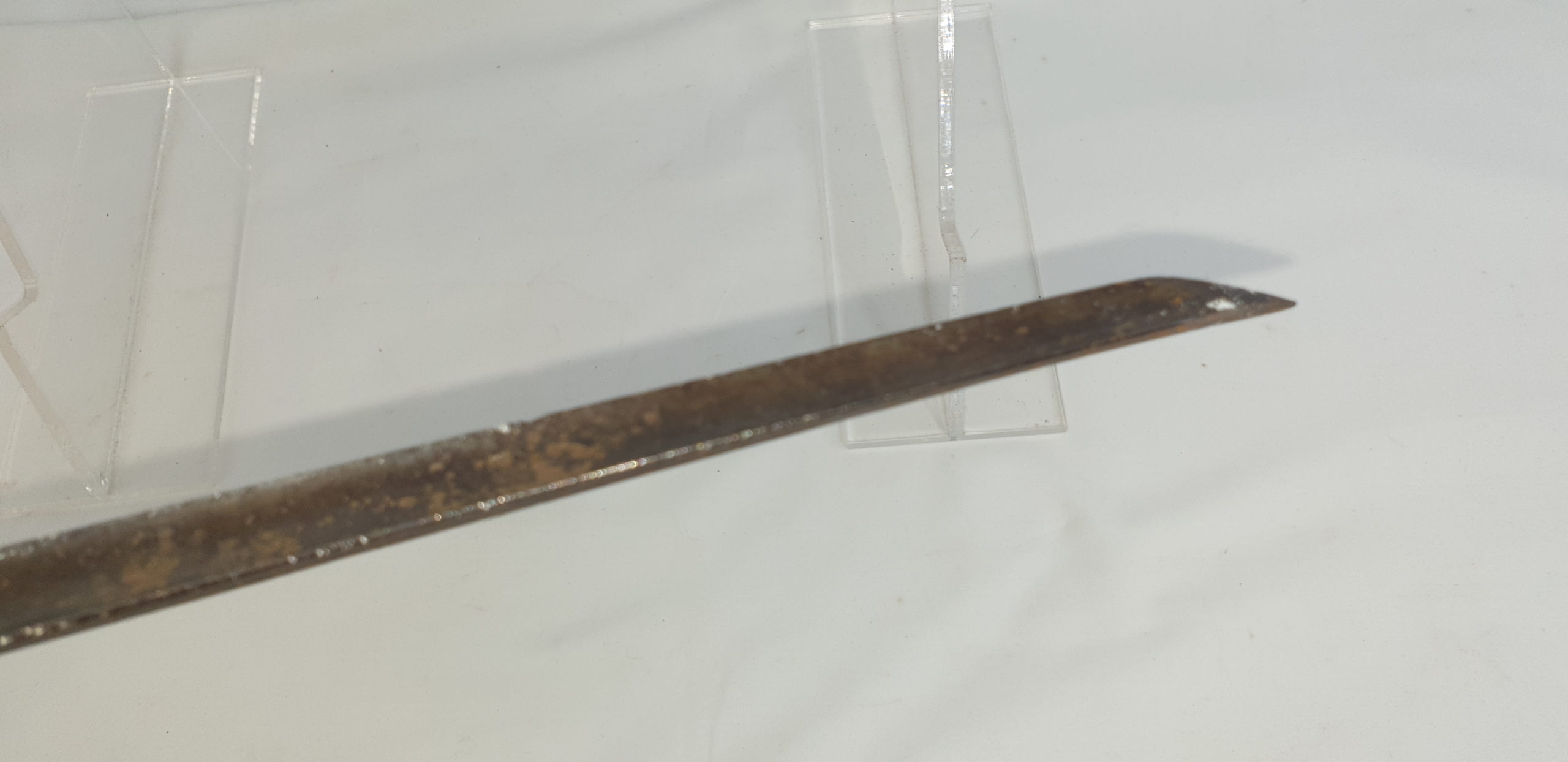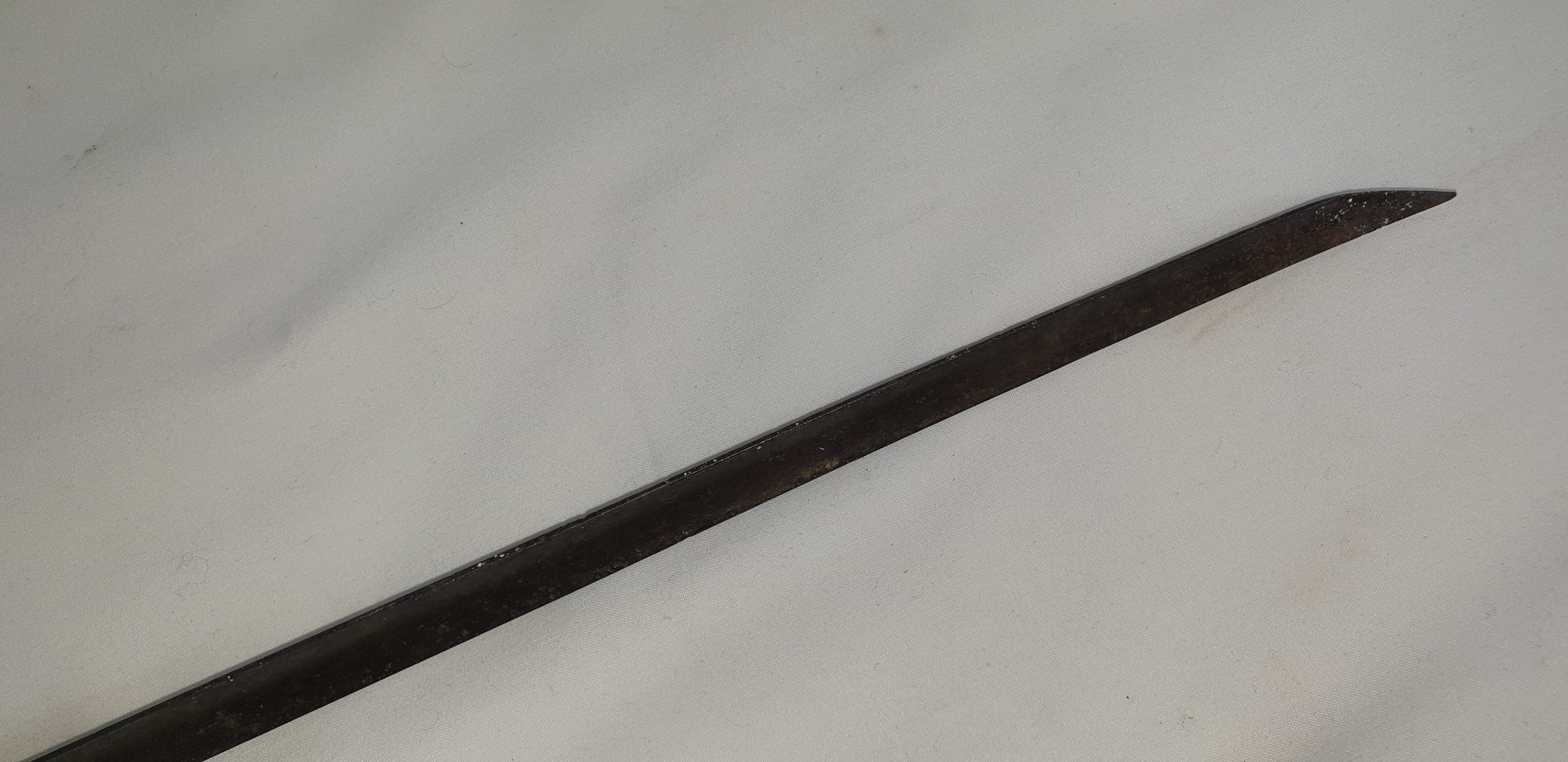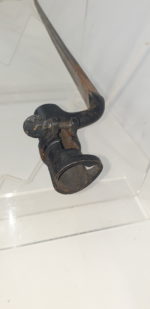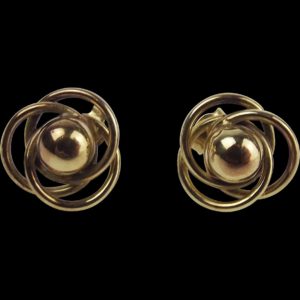~ 19th Century British Enfield Musket Bayonet ~
The British Enfield musket socket bayonet is an important piece of 19th-century military history. The most famous version of this bayonet was developed for use with the Pattern 1853 Enfield Rifle-Musket, which was the standard-issue firearm for the British Army during much of the mid-19th century, including the Crimean War and the Indian Rebellion of 1857. This bayonet exemplifies the evolving tactics and technology of the period, transitioning from the smoothbore muskets of the early 19th century to rifled firearms, which were far more accurate.
Description of the Socket Bayonet
Design: The socket bayonet had a triangular blade, which was hollow-ground to increase stiffness without adding excessive weight. It was approximately 17 inches (43 cm) long, with the total length of the bayonet (including the socket) around 21 inches (53 cm). The blade had no sharp edges and was designed for stabbing rather than cutting.
Socket: The defining feature was the socket itself, a hollow cylindrical attachment point, about 3 inches (7.5 cm) long, designed to fit over the muzzle of the musket. This allowed the bayonet to be mounted securely to the rifle while allowing the soldier to continue firing. The socket also had a locking ring or spring to prevent the bayonet from rotating or slipping off during use.
Construction: Typically made from forged steel, the bayonet was robust, and its triangular shape caused particularly lethal wounds, which were difficult to close.
Historical Development and Usage
Pattern 1853 Enfield Rifle-Musket: The Enfield musket was a percussion-cap rifled musket, an improvement over the flintlock muskets. The rifle was accurate at longer ranges due to its rifled barrel, which gave the musket ball a spin. The socket bayonet was specifically designed for this rifle, and its triangular blade was intended to penetrate deeply into an enemy’s body during close combat, a common scenario after musket volleys in the line formation.
Role in Conflicts: The Enfield musket and its bayonet saw service in several key conflicts of the 19th century, such as:
The Crimean War (1853–1856): British troops used the Enfield rifle-musket and its socket bayonet extensively against Russian forces.
The Indian Rebellion of 1857: This conflict was a major test for the Enfield and its bayonet, where they were used in brutal close-quarters fighting.
The American Civil War (1861–1865): The Union and Confederate armies both imported large numbers of Pattern 1853 Enfields, and many of these rifles came with the socket bayonet.
Decline of Use: As the 19th century progressed, advances in firearms technology, including the introduction of breech-loading rifles and repeating rifles, made the use of socket bayonets less common. By the end of the century, shorter, knife-like bayonets began to replace socket bayonets, which were seen as bulky and outdated.
Legacy
The Enfield musket and its socket bayonet represent a period of transition in military tactics. The socket bayonet allowed soldiers to quickly shift from long-range musket fire to hand-to-hand combat, a tactic dating back to the early musket era. As tactics and firearms technology evolved, bayonets shifted towards more versatile designs, but the socket bayonet remains a symbol of the mid-19th century infantry warfare.


